MarsRover
Latest
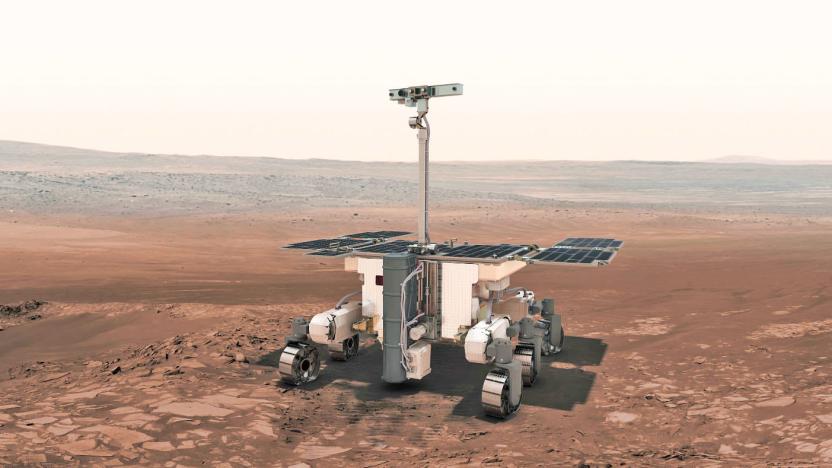
The ExoMars rover may search for life near the Red Planet's equator
Europe and Russia's ExoMars rover has been assigned its destination on the Red Planet. The robot explorer will almost certainly land on Oxia Planum -- a site rich in iron-magnesium clays near the equator -- say scientists from the Landing Site Selection Working Group (LSSWG) in Leicester, UK. They've been discussing touchdown options for around four years and -- with the blessings of the European and Russian space agencies -- this could be the spot. Unless, of course, they change tack and opt for the other site in contention: Mawrth Vallis, which lies just north of Oxia, reports the BBC.

Mars may have enough oxygen underneath its surface for life
The possibility of life on Mars has been a tantalizing possibility for years, and recent discoveries have only increased excitement about whether we'll find life on the red planet. Now, a new study in Nature Geoscience posits that it's possible that Mars may have enough oxygen to harbor life under its surface.

Mars Opportunity rover will have 45 days to phone home
As a planet-wide dust storm enveloped Mars, many were concerned about the fate of the Opportunity rover. After all, Opportunity is dependent on solar panels; the opacity of the dust storm meant that she wasn't getting enough light to stay powered. The team at NASA's Jet Propulsion Laboratory last heard from Opportunity on June 10th. Now, the storm is lifting, and once its opacity reaches a tau level of 1.5, the little rover will have 45 days to respond to the team's signals. Otherwise, NASA will stop actively listening for the rover.

Opportunity rover stops responding during Mars dust storm
Things have gone from bad to worse for the Opportunity rover now that it's caught up in a massive Mars dust storm. In an update, NASA revealed that Opportunity didn't respond to a contact attempt. The team now assumes the robotic explorer's batteries have reached a critically low level, and that it's currently in a low power fault mode that shuts off everything but the mission clock. Outside of waking up to check power levels, the rover will stay in this mode unless its solar panels can restore enough energy.

Mars Opportunity rover is in danger of dying from a dust storm
The Mars Opportunity rover is caught in a dust storm, and the craft is hunkered down doing its best to survive the intensifying weather. The storm was first detected on Friday June 1st by the Mars Reconnaissance Orbiter, at which point the rover's team was notified because of the weather event's proximity to Opportunity. The rover uses solar panels, so a dust storm could have an extremely negative impact on Opportunity's power levels and its batteries.
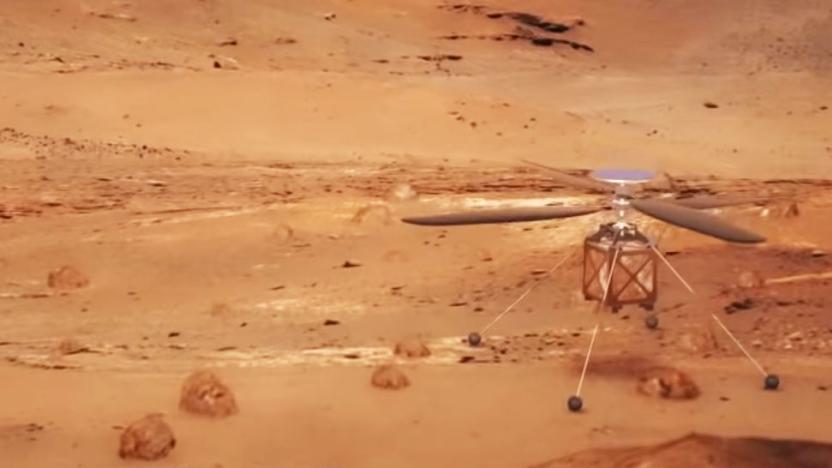
NASA is sending its first autonomous helicopter to Mars in 2020
The next vehicle NASA is sending to Mars nestles somewhere between a rover and a satellite, at least in terms of altitude. The agency is bundling an autonomous helicopter with the Mars 2020 rover to test airborne vehicles on the red planet.
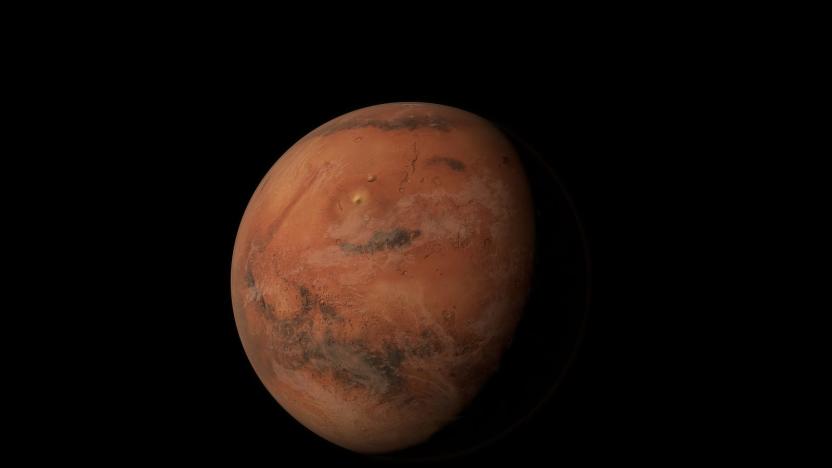
Researchers say life on Mars may have had a better chance underground
Mars is now a dry, cold planet, but whether it once supported life is still an open question. On Earth, areas that once hosted long dried-up bodies of water have been a rich source of evidence of ancient life and because of that, those sorts of areas have been the target of searches for ancient Martian life. But a paper published recently in Nature Geoscience says that might not be the best place to look.

Broken wheels won't stop Curiosity from exploring Mars
NASA's Curiosity Rover has been roaming around Mars for more than five years. In that time, it's sent back a ton of data about the red planet. Thanks to the robot, we know that the veins dotted around its craters were likely created by evaporating lakes. It also spotted more water evidence in possible mud cracks. And, its findings led scientists to theorize that ancient Mars had a lot more oxygen that they initially thought. But, all that riding around hasn't been easy on the car-sized machine. In the past, it's suffered a software scare here and there. This time round, its wheels are the problem.

NASA tests life-detecting tools for Mars in the Atacama Desert
NASA wanted to find out whether the Mars 2020 rover can truly drill for samples and look for signs of life at the same time. So, a team of scientists spent the whole February testing tools using a practice rover called the KREX-2 in one of the driest places on Earth: the Atacama Desert. It's the perfect location to trial instruments NASA plans to use on Mars, since it's as dry as the red planet and under constant assault from ultraviolet radiation. Microbes in the Atacama live underground or inside rocks -- if there's life on Mars, NASA expects to find it in similar locations.
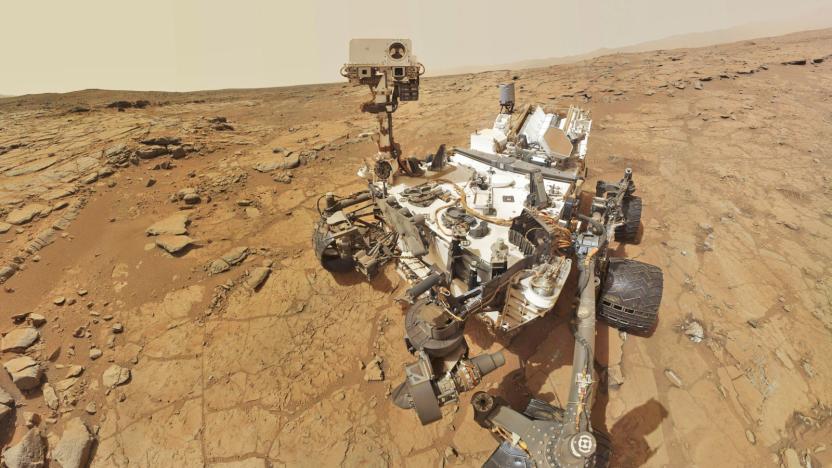
Curiosity rover can shoot lasers at any rock it wants
Is there anything cooler than sending a robot to Mars to shoot rocks with lasers? Probably not -- which is why NASA is giving the Curiosity rover the ability to shoot even more rocks with lasers. Okay, technically NASA is giving the Martian rover the ability to choose targets for ChemCam analysis. This is a process that uses a laser and telescopic camera to sort out the chemical composition of Martian rocks. Typically, NASA chooses the targets manually, but a new update will allow the rover to collect data autonomously.

ICYMI: Space foam party and mind reading for horses
try{document.getElementById("aol-cms-player-1").style.display="none";}catch(e){}Today on In Case You Missed It: A new rover concept from Harvard's SSR Lab shows a rover extruding a fast-drying foam over rocks to keep vehicles from getting stuck on other planets. University of Nottingham researchers are building an algorithm to read the moods and behavior of horses, rather than having behaviorists analyze videos on their own. You should also see this video of hardware playing a very iconic song, at least check out the hysteria around Pokemon Go, and what's going on with Mars. As always, please share any interesting tech or science videos you find by using the #ICYMI hashtag on Twitter for @mskerryd.
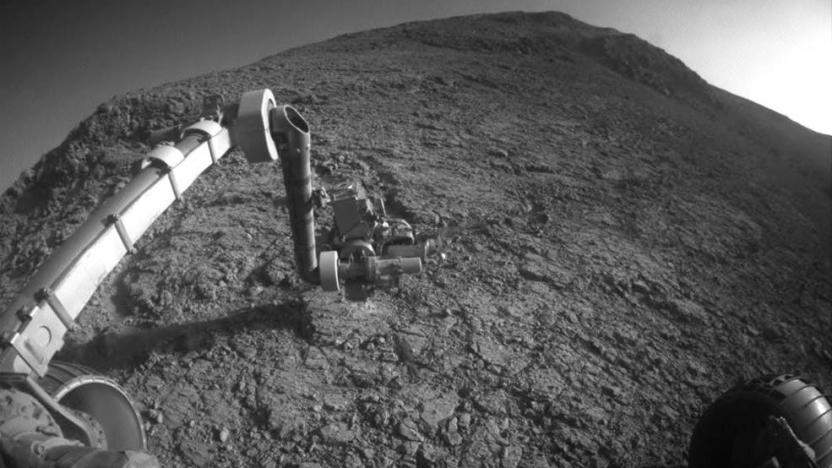
NASA's Opportunity rover celebrates 12th anniversary on Mars
When the Opportunity made its Mars landing on January 24th, 2004, NASA believed the rover would only last about 90 days, due to the Red Planet's dusty nature. But, thanks to unexpected winds which kept Opportunity's solar panels clean, that obviously never happened. This week, the aging rover celebrated 12 years on Mars, at least in terms of Earth time -- one Martian year is equivalent to roughly 1.9 of ours.

Curiosity rover snaps a detailed look at sand dunes on Mars
In its trek around the surface of the Red Planet, the Curiosity rover reached the sand dunes it already ogled from afar. While that may not sound all that exciting, these images the vehicle captured along its journey provide the first detailed look at the Martian dunes for further study. The image above is a wheel track on the "High Dune," part of the larger "Bagnold Dunes" that lie on the northwest side of Mars' Mount Sharp. The rover will scoop up and sieve sand samples to be analyzed with Curiosity's own onboard lab equipment.

Curiosity rover drills into Martian rock, looks for more evidence of water
NASA scientists won't have to wait until InSight's 2016 drilling mission to see what lies beneath the surface of Mars -- Curiosity is already on the case. After developing a taste for Martian soil late last year, the intrepid rover has started exploring the red planet's bedrock, drilling a 0.63 inch (1.6 cm) wide hole 2.5 inches (6.4 cm) deep into Mars' surface. Curiosity will spend the next several days analyzing the resulting powder in hopes of finding evidence of a once-wet planet. The shallow hole marks the first drilling operation ever carried out on Mars, and getting there wasn't easy. "Building a tool to interact forcefully with unpredictable rocks on Mars required an ambitious development and testing program," explained Louise Jandura, the chief engineer of the rover's sample system. "To get to the point of making this hole in a rock on Mars we made eight drills and bored more than 1,200 holes in 20 types of rock on Earth." The Rover tested its drill by creating a shallower hole earlier this month, though samples will only be used from the second, deeper cavity. Check out the source link for more images of the operation, including an animated GIF of the drill in action.

NASA's Curiosity rover finds ancient streambed on Mars, evidence of 'vigorous' water flow
Curiosity may have spent a while limbering up for the mission ahead, but now it's found evidence of an ancient streambed on Mars that once had "vigorous" water flow. Photos of two rock outcroppings taken by the rover's mast camera between the north rim of Gale Crater and the foot of Mount Sharp reveal gravel embedded into a layer of conglomerate rock. The shape of the small stones indicate to NASA JPL scientists that they were previously moved, and their size (think from grains of sand to golf balls) are a telltale sign that water did the work instead of wind. Evidence of H2O on Mars has been spotted before, but this is the first direct look at the composition of riverbeds NASA has observed from above. According to Curiosity science co-investigator William Dietrich, it's estimated that water flowed at the site anywhere from thousands to millions of years ago, moved at a clip of roughly 3 feet per second and was somewhere between ankle and hip deep. "A long-flowing stream can be a habitable environment," Mars Science Laboratory Project Scientist John Grotzinger said. "It is not our top choice as an environment for preservation of organics, though. We're still going to Mount Sharp, but this is insurance that we have already found our first potentially habitable environment."

Curiosity rover starts light robotic arm workout in preparation for scientific main event
As NASA promised, Curiosity has stopped at the quarter pole toward its first scientific destination to test its robotic arm and attached scientific instruments. After 100 yards of driving, the rover extended its 7-foot limb, and will now spend six to ten days checking its predetermined positions and range of motion. That will ensure the appendage is ready after surviving the chilly vaccuum of space and subsequent setdown, and will let its minders see how it functions in the unfamiliar Martian gravity and temperatures. The JPL scientists in charge of the six-wheeler will also peep the Mars Hand Lens Imager and made-in-Canada Alpha Particle X-Ray Spectrometer to warrant that they're up for all the geology to come. If all goes well, the rover will start scooping, drilling and analyzing in earnest when it hits Glenelg, then Mount Sharp -- so, we'd limber up first before tackling all that, too.

Mars Curiosity leaves its landing area, heads to distant frontier a quarter-mile away
Now that Curiosity has survived its thrill-a-minute landing and passed an upgrade and physical with (nearly) flying colors, the rover is off to earn its $2 billion keep. The trip started well, with the buggy driving 52 feet towards its first science site "beautifully, just as our rover planners designed it," according to NASA. The destination, Glenelg, is 1,500 feet away from the now-familiar Bradbury Landing where it first set down, which is pretty far for a rover that treks along at about a tenth of a mile per hour. On top of that, its minders have some stops in mind to test instruments -- meaning it'll arrive there in about two weeks. Once at Glenelg, Curiosity will scope the unusual geology of the region, though its principal destination for science is Mount Sharp, a relatively vast six miles away. Don't worry about it running out of gas, though -- the nuclear power supply will last a full Martian year, or 687 earth days.

Voice signals sent to Mars and back, while telephoto images tease rich geology
The Martian hills are alive with the sound of music. Well, NASA Administrator Charles Bolden's voice at least, as the agency reveals that the first recorded human voice has traveled from Earth, to another planet, and back. The words might not have literally echoed in the surrounding hills, but by having been beamed to Curiosity and back again, have made a small step towards interplanetary communication. Along with the motivational words of Bolden, the rover returned some telephoto images from the onboard 100mm and 34mm lenses. The pictures show the hills toward which Curiosity is bound, and tease the scientists with their rich-looking -- and hopefully revealing -- layers of geology. Want to know what interplanetary voicemail sounds like? No need to go to Mars and back, just click on the more coverage link below.

Curiosity rover flaunts its battle scar, wind sensor is bruised (but not broken)
You can't win 'em all. Such is the case with the Curiosity rover, anyway, as diagnostics have revealed that its wind sensors have sustained damage. NASA engineers aren't fully sure what caused this minor setback to the otherwise successful landing, but hypothesize that stones might've been kicked up during the rocket-powered landing, which then struck the sensor's wiring. Fortunately, there's already someone on the job, as Javier Gomez-Elvira is investigating the damage with the intent of restoring the lost functionality. Another NASA scientist, Ashwin Vasavada, believes the issue is rather minor: "It degrades our ability to detect wind speed and direction when the wind is blowing from a particular direction, but we think we can work around that." The broken instrument was initially discovered as part of NASA's routine power-cycling of all instrumentation, so as to determine an overall bill of health for the rover. Now that Curiosity has earned its battle scars, it can hold its head high during its journey to Glenelg and Mount Sharp.

Curiosity landing video assembled from high-res images (video)
A new video has been compiled by Spaceflight101.com showing Curiosity's final minutes of terror in glorious HD (though a dearth of frames and lack of stabilization make it a bit herky-jerky). It's an assembly of all the high-res photos taken by the buggy on the way down to its now familiar perch, rolling at the not-exactly-HFR speed of 4 fps, but still trumping a previous low-res thumbnail version. It gives a much clearer, rover's-eye-view of the journey, starting with the heat shield ejection and finishing with the dusty, butterfly-like touchdown. Check it out below the break to see the precarious descent -- and don't forget your Dramamine. Update: An enterprising (and patient) individual, Dominic Muller, spent four straight days creating a frame interpolated version of the video, giving the choppy footage a beautiful, smooth new look. Check out his version below the original after the break -- blow it up to full screen HD, crank the sound and enjoy.













